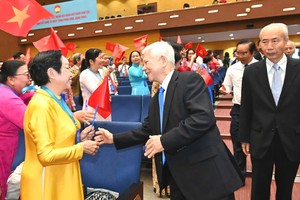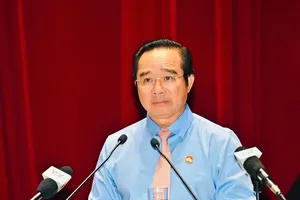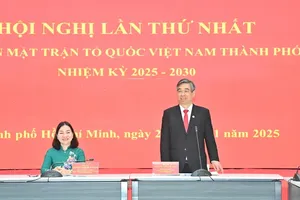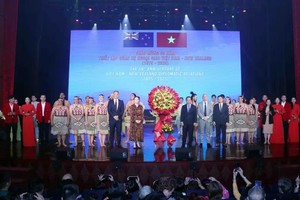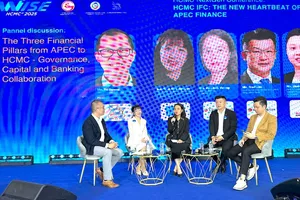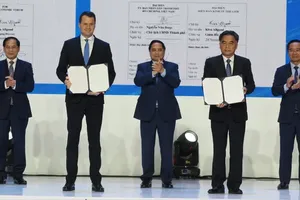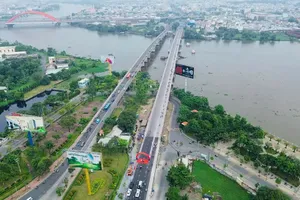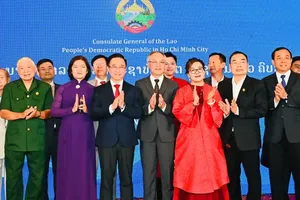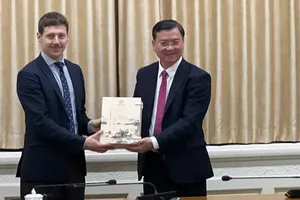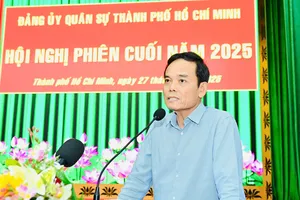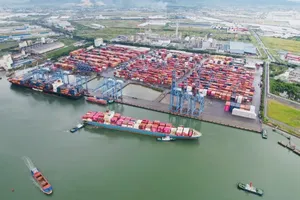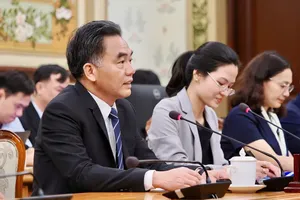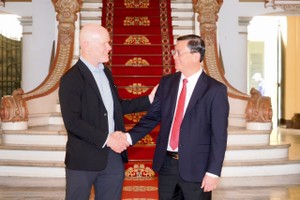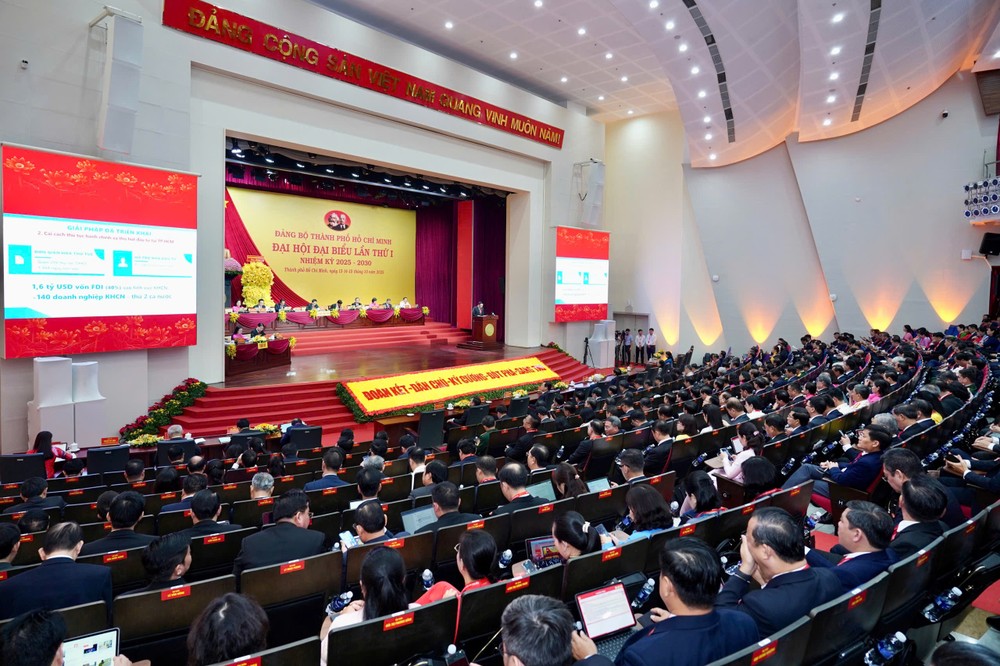
During the session, delegates delivered presentations and adopted several important documents, including the consolidated report summarizing members’ feedback on the draft Political Report for the 14th National Party Congress and the draft Political Report for the 1st Congress of the HCMC Party Committee. The Congress also reviewed key recommendations to be incorporated into its final Resolution.
The newly elected Inspection Committee of the HCMC Party Committee (2025–2030 tenure) and the city’s delegation to the 14th National Party Congress were introduced at the session. Delegates also approved the Congress’s official Resolution and its development targets for the next term.
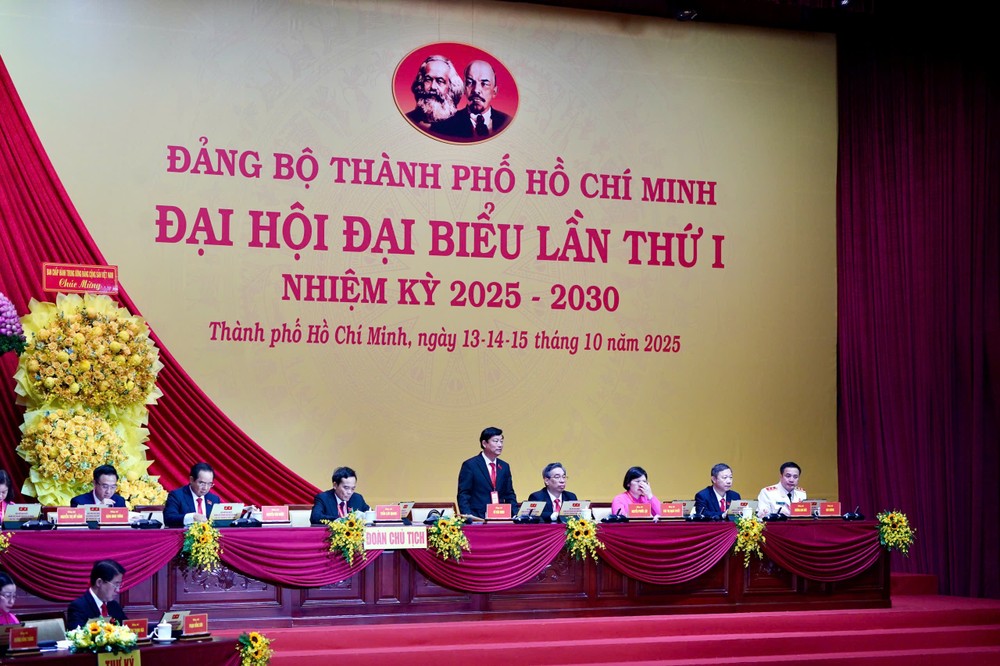
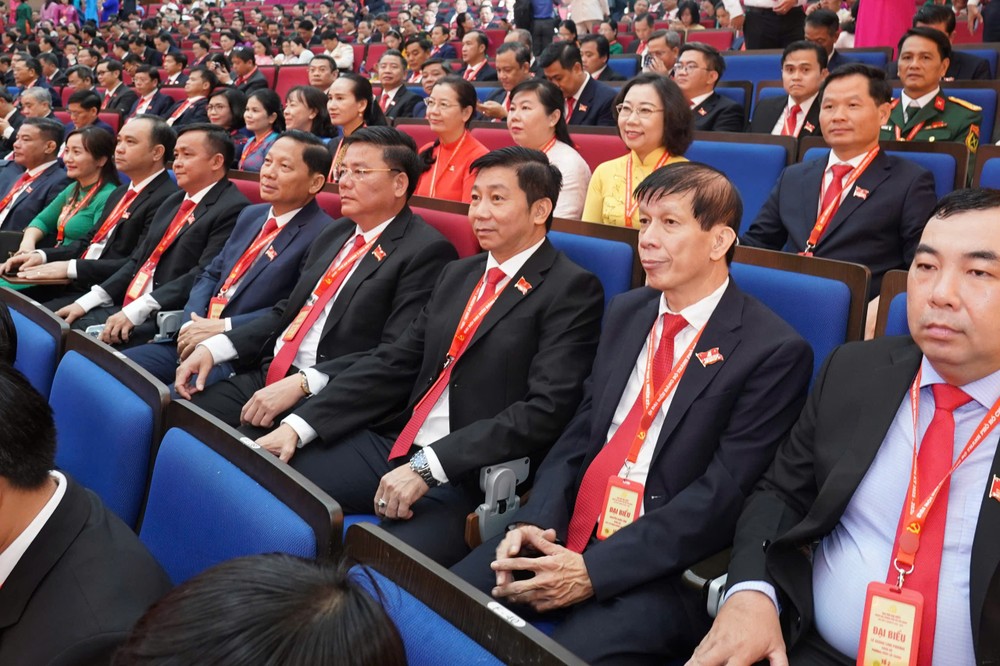
The draft Resolution sets ambitious goals for HCMC, including raising total social investment in research and development (R&D) to 2–3 percent of GRDP and allocating at least 4–5 percent of the annual city budget to science, technology, and digital transformation. These targets call for a detailed strategy and long-term vision to sustain the city’s role as Vietnam’s leading innovation hub.
A pioneering city
Speaking at the session, Mr. Lam Dinh Thang, Director of the HCMC Department of Science and Technology, presented a paper on promoting science, technology, innovation, and digital transformation—identified as strategic breakthroughs for the city in the new era under Resolution 57-NQ/TW of the Politburo on National Digital Transformation.
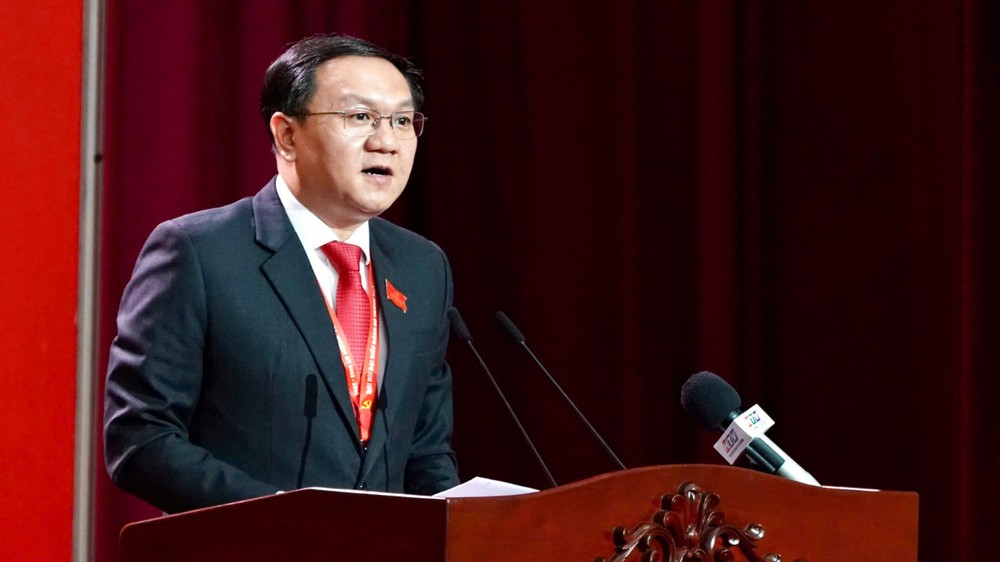
He noted that the world is entering a period of intense competition in knowledge, technology, and innovation. Science and technology have evolved from being supporting tools to becoming the core driving forces that determine each nation’s and city’s competitiveness and strategic standing.
According to Mr. Lam Dinh Thang, Resolution 57 has created a major opportunity for HCMC to strengthen its leading role in the Southern Key Economic Region—the country’s most dynamic growth area—and emerge as a national innovation hub. The city has been tasked with spearheading the shift toward a knowledge-based, digital, green, and circular economy aligned with sustainable development goals.
“HCMC is positioned as a pioneering locality—not only in terms of economic scale but also in productivity, technological capacity, and innovation—playing a pivotal role in regional and national development,” he said.
HCMC currently has more than 21,000 professionals working in science and technology, and over 135 active research groups engaged in international cooperation. Their work has produced high-quality, competitive products for both domestic and global markets. The city’s startup ecosystem is approaching the Top 100 most dynamic ecosystems worldwide, hosting more than 2,000 startups, dozens of creative spaces, and a network of incubators, intermediary organizations, and venture capital funds.
The city has developed four key innovation ecosystems—focused on agriculture, education technology, AI-IoT, and healthcare—and organized hundreds of training and networking events that have supported thousands of enterprises and innovators.
In digital transformation, HCMC has made significant strides. The city’s digital government platform has been rolled out effectively, complemented by open and shared data systems in healthcare, transport, education, and environmental management. Online public services have helped streamline nearly 300 administrative procedures related to business operations, saving the equivalent of 1,900 working days.
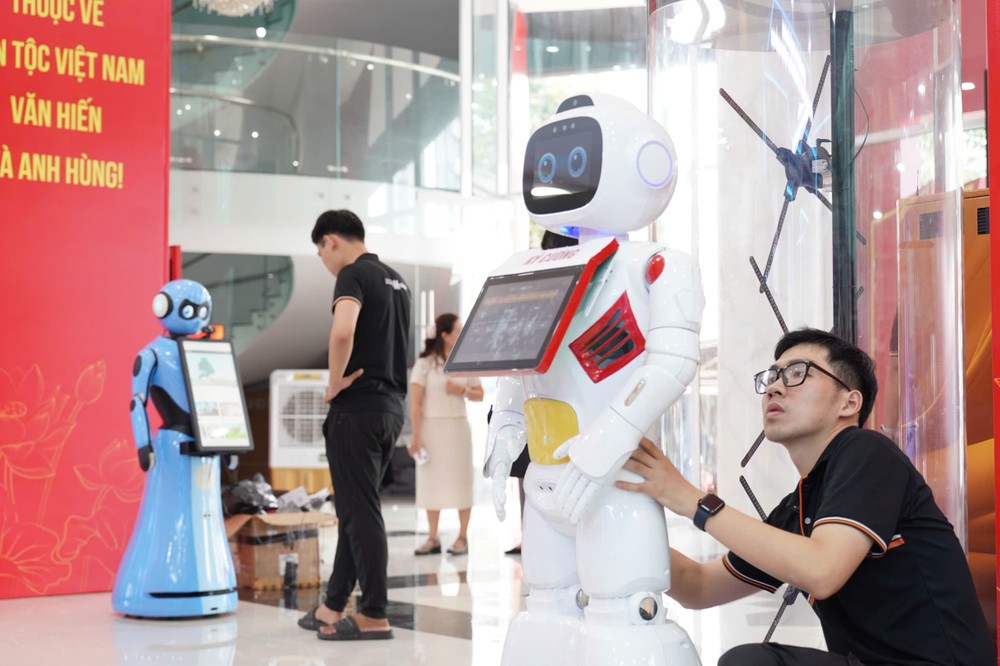
Special task forces have also been set up to directly assist strategic investors. As a result, the science and technology sector attracted US$1.6 billion in FDI in the first half of 2025—accounting for 40 percent of total foreign investment. The city now hosts more than 140 science and technology enterprises, ranking second nationwide.
Through the implementation of Resolution 57, HCMC has defined clear priorities and demonstrated strong determination to pursue breakthroughs in science, technology, innovation, and digital transformation. The city has met the targets of its 2021–2025 Startup and Innovation Ecosystem Development Program, building 18 innovation centers, 55 incubators, and ten creative spaces. The HCMC Innovation Center—an integrated facility for research, experimentation, startup acceleration, and open data sharing—has been put into operation, while shared data platforms across agencies have laid the groundwork for digital governance.
A pillar of the new economic model
However, Mr. Lam Dinh Thang acknowledged that the implementation process still faces challenges. Administrative mechanisms remain rigid and fragmented, multidisciplinary public science and technology institutions are lacking, and sustainable public–private and inter-agency partnerships in high-tech infrastructure investment have yet to be fully developed.
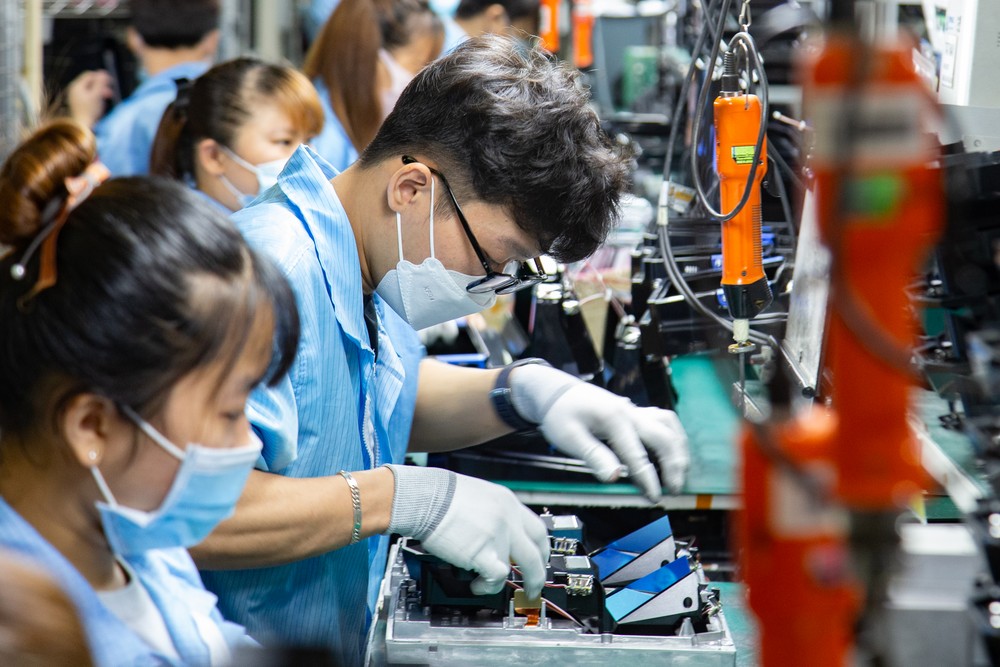
Looking ahead to 2030, HCMC aims to implement a comprehensive set of breakthrough solutions in science, technology, innovation, and digital transformation—leveraging the existing legal framework to the fullest. The city will affirm these sectors as the key pillars of a new growth model that drives the transition toward a digital, green, and circular economy.
By 2030, HCMC targets total factor productivity (TFP) to contribute 60 percent of GRDP; the digital economy to account for 30–40 percent of GRDP; total R&D spending to reach 2–3 percent of GRDP; and 3–4 percent of annual public expenditure to be devoted to science, technology, innovation, and digital transformation. The city also aims for full 5G coverage and at least five internationally recognized science and technology organizations.
To achieve these goals, Mr. Lam Dinh Thang emphasized the need to reform science and technology management—from a rigid administrative system to one that is flexible, transparent, and autonomous. The city must build strong, multidisciplinary public science and technology institutions to act as a bridge between government, enterprises, and academia.
Investment will focus on international-standard infrastructure and experimental spaces, key high-tech industries, R&D centers, and major laboratories. HCMC will also seek to attract global technology corporations and multinationals to invest in research and testing, strengthen linkages among universities, research institutes, enterprises, and venture capital funds, and expand public–private partnerships to develop scientific capabilities and strategic research programs.
The city also plans to accelerate digital infrastructure development, nurture high-quality human resources, attract international experts, and promote joint training to cultivate a new generation of scientists, engineers, and tech entrepreneurs capable of leading priority sectors.
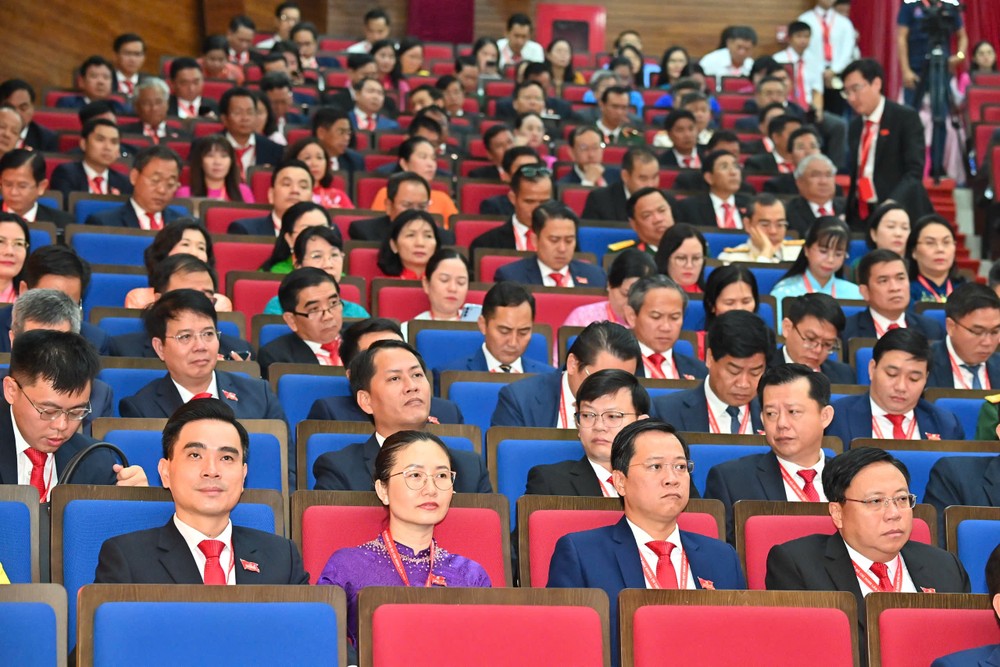
“Science, technology, innovation, and digital transformation are no longer optional—they are the only path for HCMC to maintain its leadership role and realize its aspiration to become Southeast Asia’s leading innovation hub,” Mr. Lam Dinh Thang stressed.
He affirmed that this is a decisive stage for the city to evolve into a regional center of knowledge and technology, turning science, technology, innovation, and digital transformation into core engines of growth that enhance citizens’ quality of life, strengthen business competitiveness, and improve public sector efficiency.
Key figures for 2020–2025:
Total public and private investment in science and technology is estimated at 1 percent of GRDP, equivalent to VND76.049 trillion.
Over 60 percent of science and technology projects are directly applied by enterprises and local government departments.
Average proportion of enterprises engaged in innovation: 37.8 percent.
Contribution of total factor productivity: over 50.7 percent.
